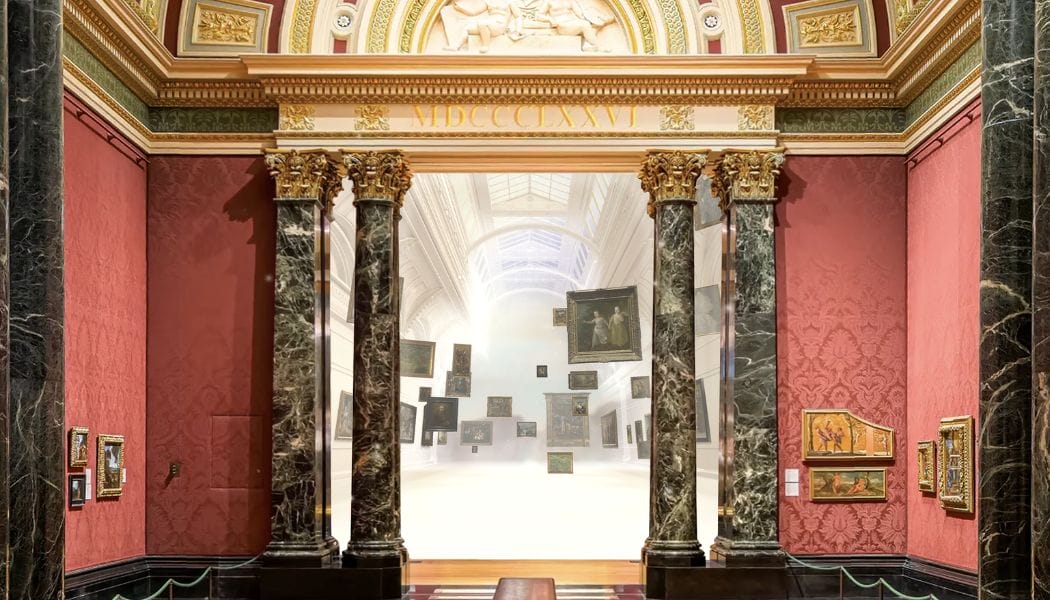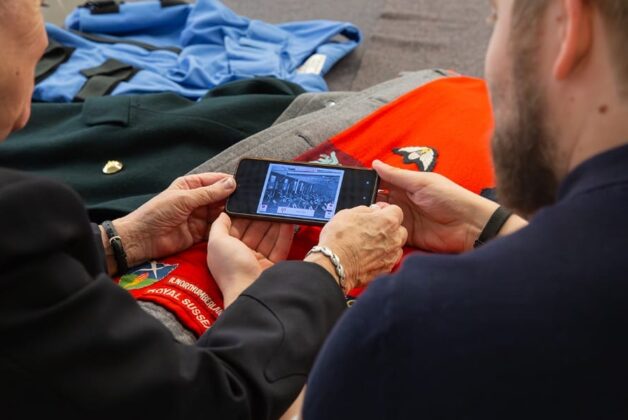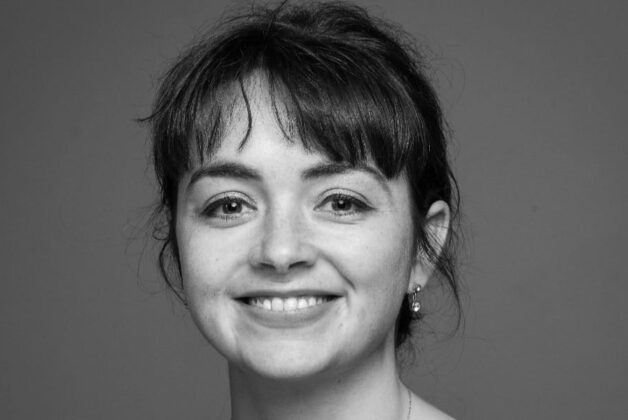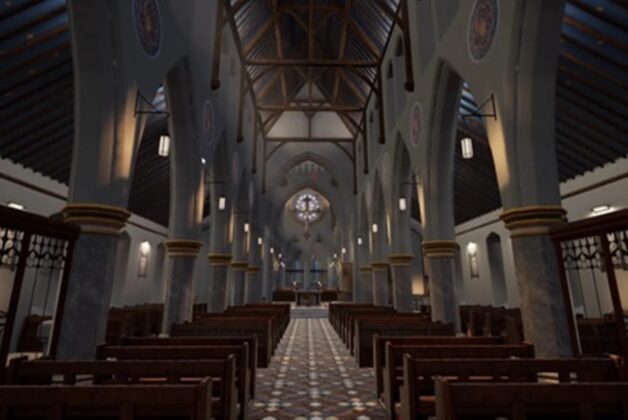Image: View of entrance to the Imaginarium © The National Gallery
A new ‘Imaginarium’, 200 paintings’ research made public, and updated AR game co-created with children are among the developments
The National Gallery has unveiled new digital experiences to celebrate its Bicentenary, including a new digital art experience, 200 paintings’ catalogue entries made public, and an updated augmented reality game.
The National Gallery Imaginarium is the first of these experiences, described as a new digital art experience.
In it, remote digital visitors can ‘step inside’ a digital version of a room within the gallery to see paintings, and even see how other visitors have interpreted the same work.
Spark your imagination in the National Gallery Imaginarium, a virtual space to interact with your paintings ✨
This new experience combines soundscapes, guided interaction, poetry and animations, to help you pause and see the your paintings afresh. Let us take you on a journey… pic.twitter.com/dVoH1xyZUF
— National Gallery (@NationalGallery) March 18, 2025
“It’s important for the Gallery to deepen the engagement with the paintings that our remote visitors can experience”, explained John Stack, Director of Digital Innovation and Technology at the National Gallery.
Stack added: “it makes perfect sense to us to use new technologies to bring that experience to visitors that can’t spend all the time they would like to with our paintings in person, to spark their imagination and inspire new perspectives.”
The experience features an introduction from poet and novelist Sir Ben Okri, and a newly commissioned soundscape from sound artist Nick Ryan.
The gallery is also making freely available 200 paintings’ catalogue entries, totalling 2.2million words of academic research.
Combined is information already held, but only available on request or in select publications, and new findings brought to light with recent re-examination. It is to share 2,700 images, including 75 x-rays, 155 infrared images and over 250 photomicrographs, and information on the frames surrounding the paintings, the earliest of which dates to the 13th century.
New scholarship presented as part of the ‘200 Paintings for 200 Years’ project includes research on Raphael (1483 – 1520)’s Portrait of Pope Julius II (1511), one of the 38 paintings first purchased by the Government that marked the foundation of a National Gallery in 1824.
Christine Riding, Director of Collections and Research at the National Gallery, called the project a “significant milestone” in making freely accessible the information it holds.
The gallery’s existing augmented reality game, ‘The Keeper of Paintings’, has also launched a fourth experience, co-created with children.
The Gallery said the project, supported in part by Bloomberg Philanthropies, are “united by a commitment to human-centred design and meeting our audiences where they are – whether they have experienced the Gallery before or are coming to us for the first time.”





